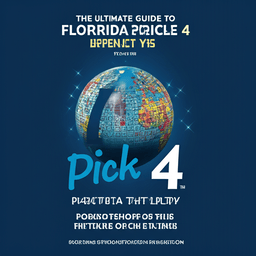Introduction:
Efficiency and cost-effectiveness are critical for survival and success in today’s fast-paced manufacturing environment. Product nesting software has emerged as a vital tool for businesses that work with materials like wood, metal, fabric, composites, glass, and more. This sophisticated software optimizes material usage by intelligently arranging parts on a raw material sheet, significantly reducing waste and maximizing yield. This translates into substantial cost savings, a reduced environmental impact, and increased profitability. But the critical question for businesses looking to implement this technology is: “Who sells product nesting software?” This comprehensive guide will not only explore the benefits and features of this software but, most importantly, provide a clear answer to that question, guiding you through the different types of vendors and helping you choose the right partner for your needs.
Understanding the Power of Product Nesting Software:
Before diving into who sells the software, let’s recap why it’s so important:
- Automated Layout Generation: Advanced algorithms analyse part shapes, sizes, orientations, and cutting constraints to create the most efficient layouts automatically.
- Waste Minimization: Strategic part placement minimizes offcuts and unusable areas, reducing material waste and disposal costs.
- Increased Productivity and Throughput: Automated nesting significantly speeds up the production process, leading to faster turnaround times and higher output.
- Improved Material Utilization: Maximizes the use of each material sheet, reducing the need for additional raw materials.
- Enhanced Accuracy and Consistency: Eliminates human error in part placement, ensuring consistent cutting results and higher product quality.
- Seamless Integration: Integrates with CAD, CAM, and ERP systems for a streamlined workflow.
Different Types of Product Nesting Software:
- 2D Nesting: For flat materials like sheet metal, wood, fabric, and composites.
- 3D Nesting: For complex 3D objects, commonly used in aerospace, automotive, and meld making.
- True Shape Nesting: Considers the precise shape of each part for even greater material optimization.
- Cloud-Based Nesting: Offers accessibility, collaboration, and reduced IT costs.
Key Factors to Consider When Choosing a Nesting Software Vendor:
Choosing the correct vendor is just as crucial as selecting the right program. Here are some key considerations:
- Industry Expertise: Does the vendor have experience working with businesses in your specific industry and with your specific materials?
- Software Capabilities: Does the software offer the features you need, such as 2D or 3D nesting, true shape nesting, and integration with your existing systems?
- Scalability: Can the software grow with your business?
- User-Friendliness: Is the software easy to learn and use?
- Training and Support: Does the vendor offer comprehensive training and ongoing technical support?
- Pricing and Licensing: What are the different pricing and licensing options available?
- Reputation and Reviews: What are other customers saying about the vendor and their software?
Who Sells Product Nesting Software? The Answer:
Product nesting software is sold by a variety of vendors, each with its own strengths and specializations. Here’s a breakdown:
- Dedicated Nesting Software Developers: These companies focus primarily on developing and selling nesting software. They often offer a wide range of solutions for different industries and materials. Examples include:
- Sigma Nest: A leading provider of advanced nesting software for sheet metal fabrication, known for its powerful algorithms and user-friendly interface. (Website: www.sigmanest.com)
- Lintec: Offers comprehensive solutions for sheet metal processing, including nesting, CAD/CAM integration, and shop floor management. (Website: [invalid URL removed])
- JETCAM: Specializes in nesting and CAD/CAM for sheet metal and composite industries, focusing on maximizing material utilization. (Website: www.jetcam.com)
- Radon: Provides nesting solutions for various industries, including sheet metal, punching, and profiling, with a strong emphasis on ease of use. (Website: www.radan.com)
- Opti Cut: Specializes in nesting software for the wood industry, offering features tailored to woodworking applications. (Often sold through resellers; searching “Opti Cut resellers” will yield results.)
- CAD/CAM Software Companies with Integrated Nesting: Many CAD/CAM software providers include nesting functionality within their broader software suites. This is a good option if you need both design and manufacturing tools. Examples include:
- Autodesk (Inventor, AutoCAD): Autodesk’s Inventor and AutoCAD offer nesting capabilities, particularly for sheet metal design and fabrication. (Website: www.autodesk.com)
- SolidWorks: SolidWorks also includes nesting tools, often used in conjunction with its other design and manufacturing modules. (Website: www.solidworks.com)
- Amsterdam: A popular CAM software that incorporates nesting functionality for various machining applications. (Website: www.mastercam.com)
- Resellers and Distributors: Many software companies partner with resellers and distributors to sell and support their products. These retailers often have specialized knowledge of specific industries or regions and can provide local support and training. Searching online for “nesting software resellers” or contacting the software developers directly can help you find local distributors.
- Value-Added Resellers (VARs): VARs offer more than just software sales. They frequently offer consulting, implementation, training, and customisation services to help businesses get the most out of their software investments.
Choosing the Right Vendor for Your Business:
The best vendor for your business will depend on your specific needs and requirements. Consider the following:
- Your Industry and Materials: Choose a vendor with expertise in your industry and experience working with your materials.
- Your Budget: Determine your budget and look for a vendor that offers solutions that fit within your price range.
- Your Technical Expertise: If you have limited technical expertise, choose a vendor that offers comprehensive training and support.
- Your Long-Term Goals: Consider your long-term growth plans and choose a vendor that offers scalable solutions.
Conclusion:
Product nesting software is a powerful tool that can significantly improve efficiency and profitability in manufacturing. By understanding the different types of vendors and carefully considering your needs, you can choose the right partner to help you implement this technology successfully and achieve your business goals. Remember that the “who” is just as important as the “what” when it comes to product nesting software. Choosing a vendor who understands your business and can provide the necessary support and expertise is key to maximizing your return on investment.


